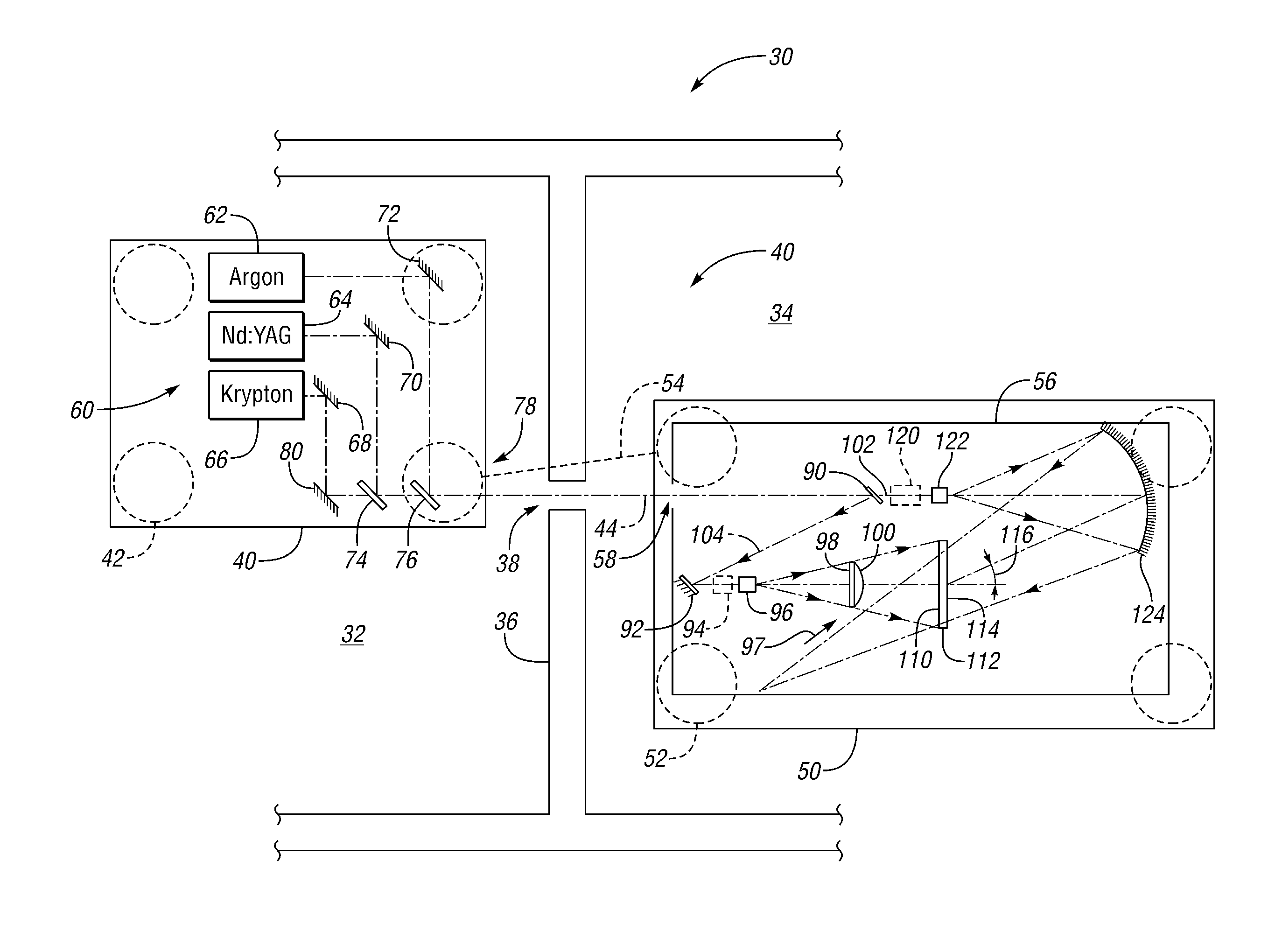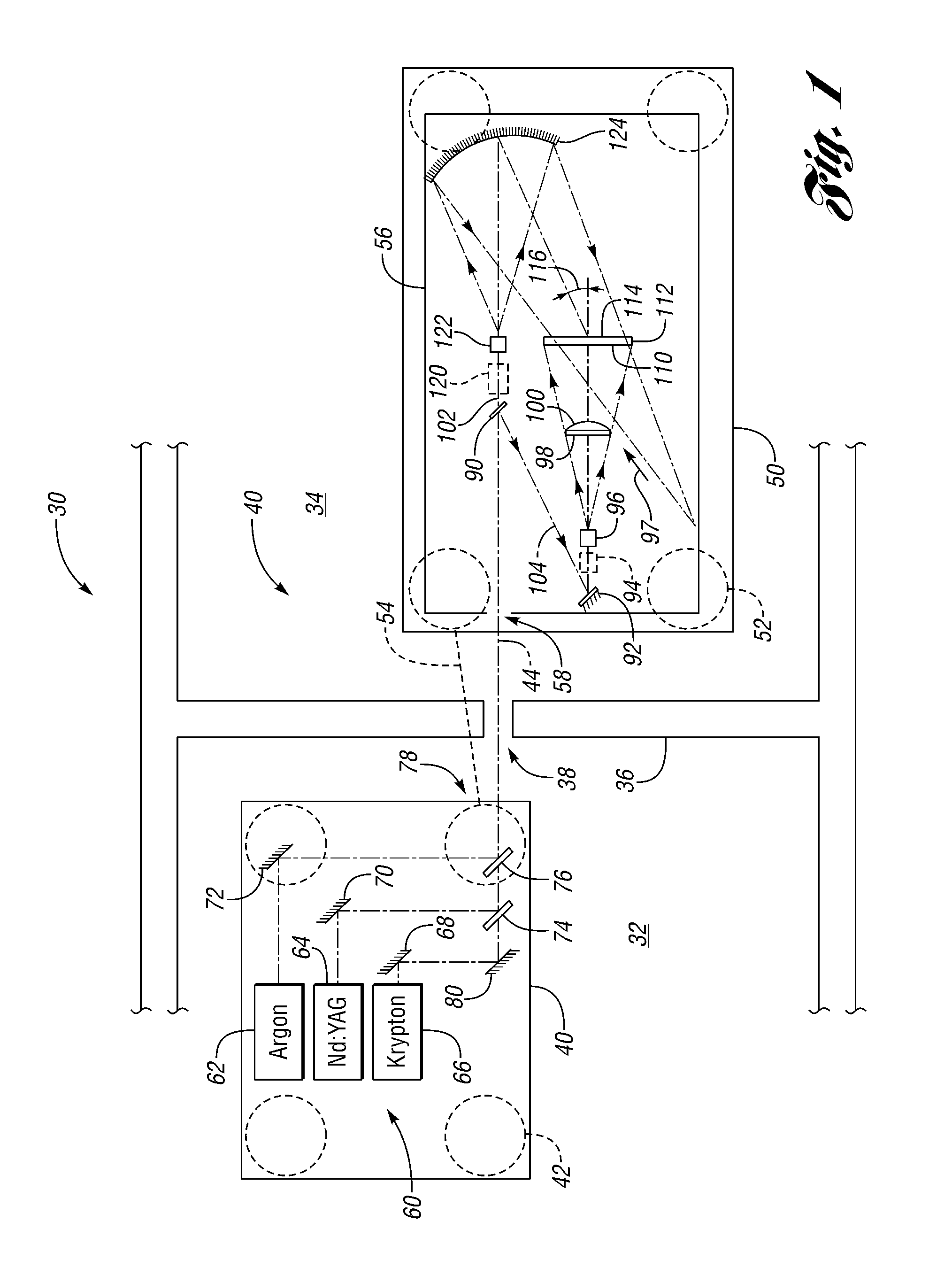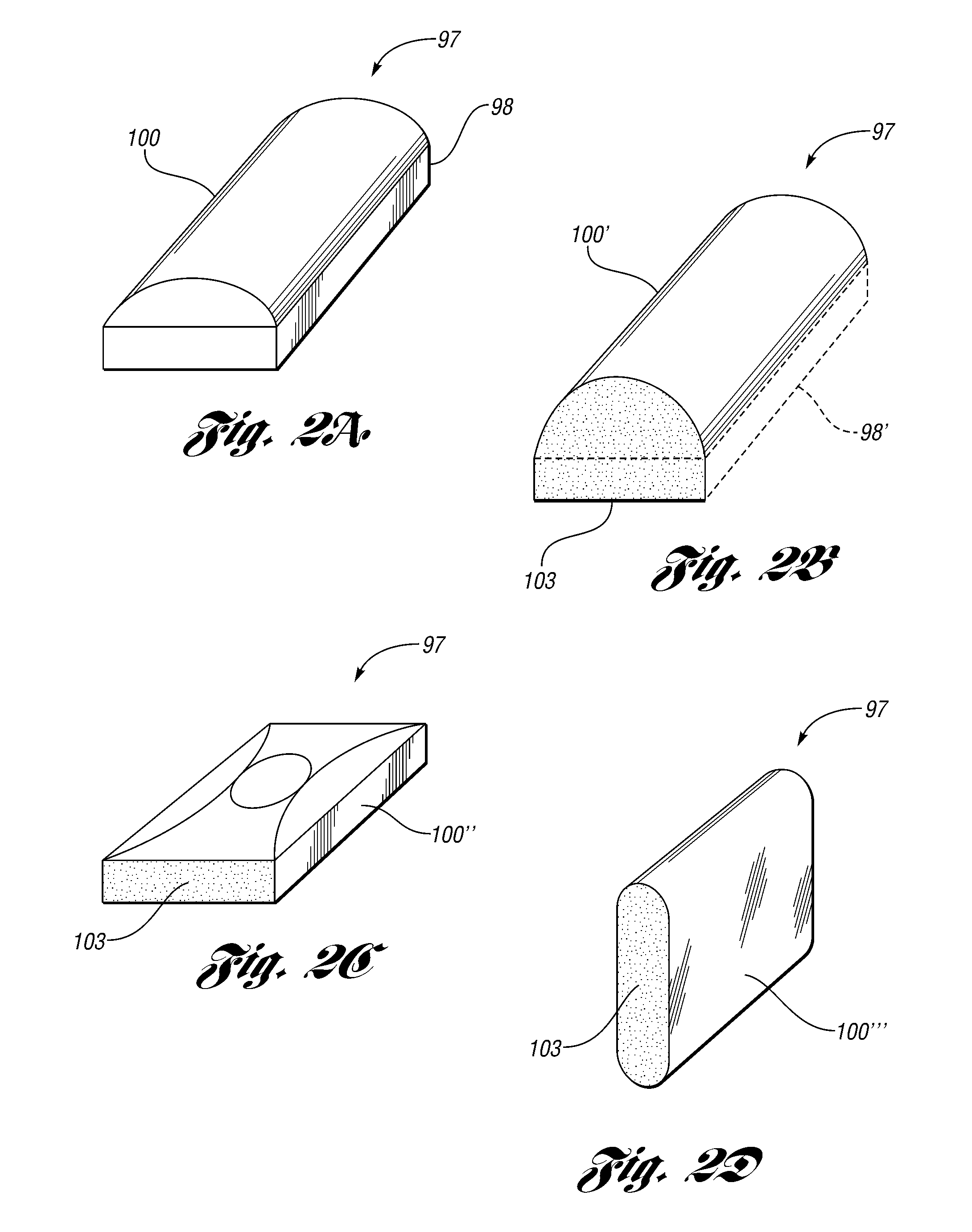System and method for autostereoscopic imaging using holographic optical element
a technology of holographic optical elements and autostereoscopic imaging, which is applied in the field of system and method for creating and displaying autostereoscopic threedimensional images using holographic optical elements, can solve the problems of poor color reproduction of projected images, affecting horizontal resolution and light output, and affecting so as to improve the uniformity of illumination and color balance, improve the effect of color fidelity during playback, and improve system efficiency
- Summary
- Abstract
- Description
- Claims
- Application Information
AI Technical Summary
Benefits of technology
Problems solved by technology
Method used
Image
Examples
Embodiment Construction
)
[0060]As those of ordinary skill in the art will understand, various features of the embodiments illustrated and described with reference to any one of the Figures may be combined with features illustrated in one or more other Figures to produce alternative embodiments that are not explicitly illustrated or described. The combinations of features illustrated provide representative embodiments for typical applications. However, various combinations and modifications of the features consistent with the teachings of the present disclosure may be desired for particular applications or implementations. The representative embodiments used in the illustrations relate generally to an autostereoscopic display system and method capable of displaying a stereo image in real-time using either live stereo video input, such as provided by a stereo camera, endoscope, etc., or a standard video input processed to generate simulated stereo video that is perceived as a three-dimensional image by one o...
PUM
 Login to View More
Login to View More Abstract
Description
Claims
Application Information
 Login to View More
Login to View More - R&D
- Intellectual Property
- Life Sciences
- Materials
- Tech Scout
- Unparalleled Data Quality
- Higher Quality Content
- 60% Fewer Hallucinations
Browse by: Latest US Patents, China's latest patents, Technical Efficacy Thesaurus, Application Domain, Technology Topic, Popular Technical Reports.
© 2025 PatSnap. All rights reserved.Legal|Privacy policy|Modern Slavery Act Transparency Statement|Sitemap|About US| Contact US: help@patsnap.com



